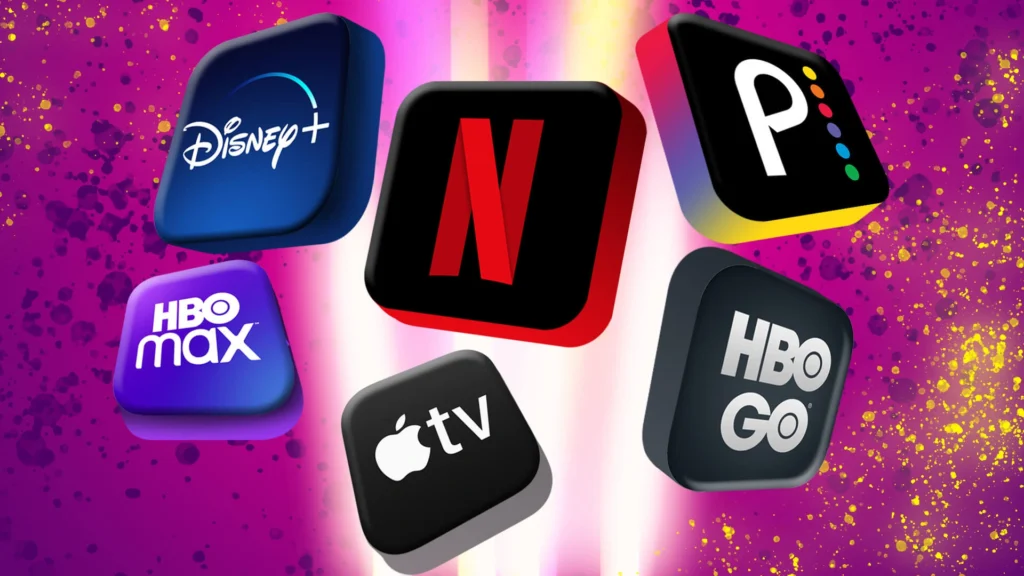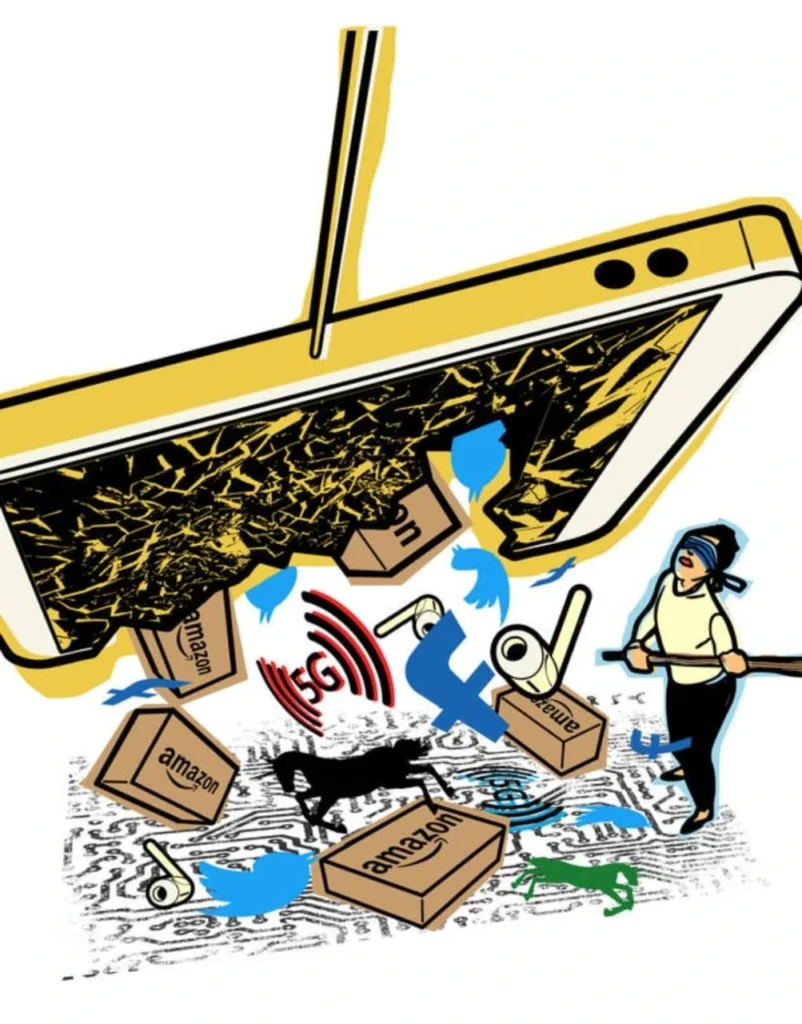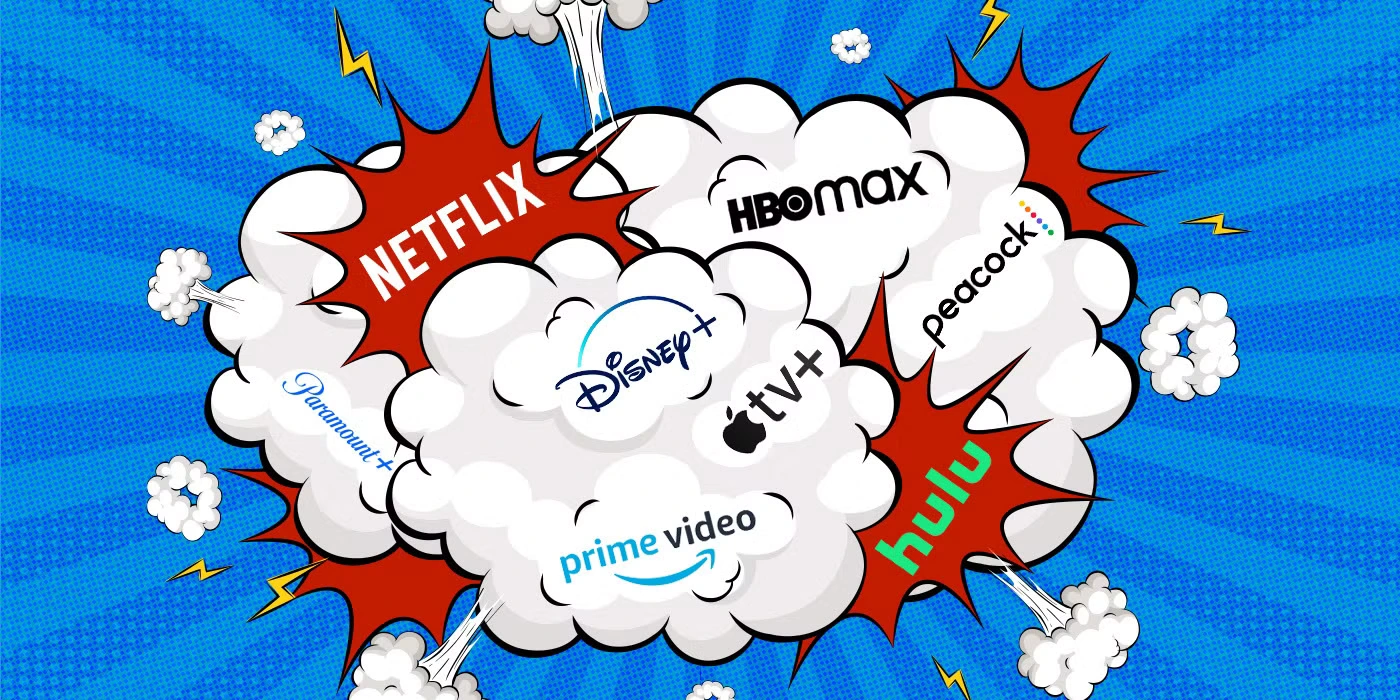The future of streaming sites is expected to boom. If these platforms focus on exclusive content using new AI-driven technologies. These companies will likely adopt hybrid models, blending subscriptions with ads to maximize their revenue. Consumers’ demand for high-quality content will push these services to bring innovative technology. Mergers and partnerships will form a competitive environment. The future of streaming sites will be a boom. Platforms focusing on exclusive, AI-driven content will boom. Companies will likely adopt hybrid models, blending subscriptions with ads to maximize revenue.
Some Popular Free Streaming Sites
1. Tubi TV
Tubi is one of the Popular streaming sites. It provides a wide range of movies, TV shows, and documentaries for free. The only fault is its ad-supported, which means the user may experience commercials during their viewing. Tubi’s library has vast content including various genres, drama, action, and more.
2. Crackle
Crackle is a free but AD-supported service. It provide a vast range of movies, TV shows, and exclusive original content. While its library is not as rich as paid services, it still offers a solid range of content. Its library includes popular old titles too.
3. Pluto TV
Pluto TV functions as both an on-demand service and a live TV streaming sites. It offers free access to thousands of movies, TV shows, and live channels. It can provide you access to news and entertainment channels too. Its interface is user-friendly but it is ad-supported.
4. Vudu’s “Movies on Us”
Vudu is well known for its rental and purchase options. It also has a free section called “Movies on Us”. It features a variety of films and TV shows. But it’s not like another free platform as it’s ad-supported. While you may not find rich media the free content available is quite commendable.
5. IMDb TV
IMDb TV ( now part of Amazon), offers a library of free movies TV shows, and original programming. This platform features a variety of genres and it has partnerships with major studies. This partnership means it boasts an impressive collection of content. Just like other IMDb is also ad-supported.
6. Xumo
Xumo offers free on-demand and live TV content. It includes sports, news and movies too. It features hundreds of live TV channels and a variety of on-demand content. The service is ad-supported just like other free streaming sites.
7. Kanopy
Kanopy offers free access to movies, documentaries, and educational content. It is available through libraries and educational institutes. Users must sign in through a participating library or university account to access the content. It is a good platform for independent films and classic cinema.
8. Popcornflix
Popcornflix is a free streaming site. It offers a range of movies and TV shows. Its library includes various genres like horror, drama, and action. It is an ad-supported site so you might experience interruption during playback.
Benefits of Free Streaming Sites:
- Cost-Effective: As the name suggests “free”. These sites don’t require any additional fee or subscription. They are entirely free to use.
- Wide Range of Content: These platforms offer access to a wide range of movies, TV shows, and other video content. Although the content may not always have the latest releases.
- Ease of Use: Free streaming sites are often user-friendly. They allow quick access to content without complicated setup procedures.
Drawbacks of Free Streaming Sites:
- Ads: The primary drawback of free streaming sites is the presence of ads. Many Commercial interruptions can affect user experience.
- Lack of availability of fresh Content : Compared to paid services, free platforms tend to have a smaller selection of content. Newer releases or popular titles are harder to find on free sites.
- Legal Risks: Some free streaming sites may not be fully legal thus providing pirated or unauthorized content. It’s important to stick with reputable platforms to avoid potential security risks or legal issues.

Current Market Leaders in Streaming Services
There are many streaming sites providing various unique, informative and engaging content. All these are competing with each other to be a better version of themselves. They provide insightful content, improving audience engagement.
Netflix: A Continuous Leader
Netflix is a key player in the streaming sites industry. It has a vast library and a strong reputation. It provides original and fun content. Despite the rise of another new platform its subscription base continues to grow. Its position as a market leader is commendable.
Disney+: A Franchise Powerhouse
Disney+ has had a huge success in recent years. Through leveraging its beloved franchise including Marvel and Star Wars it had earned a lot. The platform can deliver exclusive titles that have attracted a diverse audience. From families to young everyone praises the Diney’s iconic content.
Amazon Prime Video: The Bundled Experience
Amazon Prime Video stands strong by offering a wide array of films. Paired with the added perks of Amazon’s e-commerce services. The bundling of Prime Video with other Amazon services entices subscribers, making it an attractive choice beyond just video content.
Hulu: Traditional Meets Modern
Hulu shines by offering a unique combination of on-demand streaming sites and live TV options. This blend appeals to viewers who seek the flexibility of modern streaming while maintaining access to traditional cable-style programming.
Constant Evolution
These platforms are not static; they continue to evolve through innovative features, pricing strategies, and exclusive deals. The drive to capture audience loyalty remains at the top as competition continues to intensify.
Emerging Competitors and Their Strategies

New Platforms are coming out with new strategies. These strategies are shaking up the streaming site’s landscape. Peacock and Paramount+ are creating their own identities with planned strategies.
Peacock has a rich library of NBCUniversal classics. It is heavily investing in live sports. This dual approach is a great idea to gain audiences. Audiences who are looking for both nostalgia and real-time action can stream.
Paramount+ is taking exclusive titles from franchises like Star Trek and Mission: Impossible. Their targeted advertising strategy aims to attract subscribers. It will attract the audience who want blockbuster entertainment for free.
Meanwhile, niche platforms such as Crunchyroll are focusing on several genres. They have wide range of media for anime- lovers, something which big platform typically ignore.
These emerging or underrated sites understand the importance of audience connection through tailored content strategies. Their focus on consumer preferences allows them to thrive amidst stiff competition, reshaping what viewers expect from streaming sites.
Impact on the Traditional TV Industry
The rise of streaming sites has affected the traditional cable TV industry a lot. Viewers are getting progressive. They are ditching cable and are looking for more flexibility, which traditional cable often lacks.
Cable providers had faced a lot of problems in retaining the subscriber as on-demand content becomes standard. While many streaming platform like Netflix and Disney+ offering large content library audience usually found it better than cables.
They have faced challenges in partnership also. Advertising companies are shifting towards Digital Platforms. This increases the burden on cable companies.
Streaming sites options can be tailored to specific interest. Traditional networks doesn’t provide this option. They should rethink their strategies and risk options. Being stuck to the old method will take them nowhere. Traditional cables should innovate themselves and provide more offerings to their audiences if they want to stay in the ground.
The landscape is rapidly changing. The one which will change with changing environment will grow. Being stuck on old method will take you nowhere. Adapting quickly may be crucial for survival against this growing tide of competition from emerging platforms.

Advancements in Technology and its Role in Shaping the Industry
- High-Definition Streaming and 4K Content
The shift to HD and 4k content has now become a standard. It offers the audience cool visuals and immersive audio. Therefore it helps to enhance the overall user experience. - Use of Artificial Intelligence
The use of AI to provide the user the content according to their taste is now in trend. This AI-driven software analyzes user habits and suggests similar content. This further helps in improving the user’s overall experience. - Cloud Computing for Enhanced Playback
Cloud computing has changed the delivery of the content. It provides scalable storage solutions and faster load times. Thus ensuring uninterrupted streaming even during high traffic. - Mobile Streaming Growth
The rise of these streaming sites and apps allows their users to enjoy their favorite shows according to their convenience. It offers them flexibility as they can access the content anytime, anywhere. - Impact on Production Strategies
These technological advancements have also influenced how content is produced. These platforms continue to adopt new tech. The production strategies are evolving to meet the demand for high-quality, on-demand content. - Shaping the Future of Entertainment
With constant technological progress, innovations in streaming sites will continue to redefine the entertainment industry. It is impacting both user behavior and content creation in the years to come.
The Importance of Original Content for Success
Original content has become a crucial driver of success for streaming platforms in today’s competitive media landscape. Here’s why it’s so important:
- Attracting Subscribers
Original content is a key component in attracting new subscribers. Audience prefer platforms that offers shows,movies or documentries which are original. This uniqueness creates a sense of exclusivity making platform more appealing. - Brand Identity and Differentiation
Original content creates a unique brand identity. Just like Netflix< Netflix is known widely for its unique, original, and entertaining content. By offering unique and fun content platforms can stand out in the market. This can help the brand create their own unique identity. - Building Viewer Loyalty
The success of popular original shows can lead to sustained viewer engagement. If viewers like your content they are likely to stay subscribed and continue watching future seasons. This will help the platform retain the user in the long run. - Revenue Generation
Original content provides multiple revenue streams. Subscription is just one way of earning profits. Licensing, syndication, merchandising, and international distribution rights are other ways of earning. If a brand has a strong portfolio of original programming the opportunities will increase. - Awards and Recognition
Having prestigious awards like the Emmys or Oscars too boosts the platform’s profile. Providing original content allows sites to apply for these awards. This further helps in driving marketing value and thus increasing audience interest. - Diversification of Content Portfolio
Original content allows the platform to diversify their offerings. It allows streaming platforms to attract various demographic and niche markets. This provides users with content according to their tastes and interests. It helps show the user content according to their interest ranging from big-budget dramas and independent films and niche documentaries. - Long-Term Investment
Original content is a long-term asset. Licensed content can be expired or be pulled from platforms. Platforms that invest in their creations are building a library that will continue to grow in value and remain available to subscribers indefinitely. - Cultural Impact
Successful original content can create cultural moments, sparking discussions, memes, and fandoms. Shows like Game of Thrones and The Mandalorian became much more than just TV programs. they became part of global pop culture thus gaining audience retention and strengthening platform leadership.
Overall, original content is not just about attracting viewers in the short term. It’s a powerful tool for building brand loyalty, maintaining competitive advantage, and ensuring long-term success.
Potential Mergers and Acquisitions in the Industry
Potential mergers and acquisitions in the streaming industry could reshape the competitive landscape. The platforms should expand their content libraries, subscriber bases, and technological capabilities. The rise of niche streaming services can lead to larger platforms pursuing mergers to secure more exclusive content. It will further help in maintaining a position in the market. Mergers could help companies get more resources and thus offer diverse content. Such moves can streamline operations and increase profitability by reducing competition. Mergers and acquisitions are likely to play a key role in shaping the future of the industry as the streaming wars intensify.
Conclusion
The future of streaming is full of high competition and innovations. Major players like Netflix, Disney+ and Amazon are enhancing to adapt to emerging platforms. Consumers demand personalized content and ad-supported models. More enhanced features will drive growth. But the major pressure is on Traditional cables as they weren’t able to cope with latest technology. Exclusive content deals and technological advancements such as AI-driven recommendations will further intensify the battle. Mergers and Acquisitions could reshape the industry. Mergers or acquisitions will allow the brand to stay competitive.

